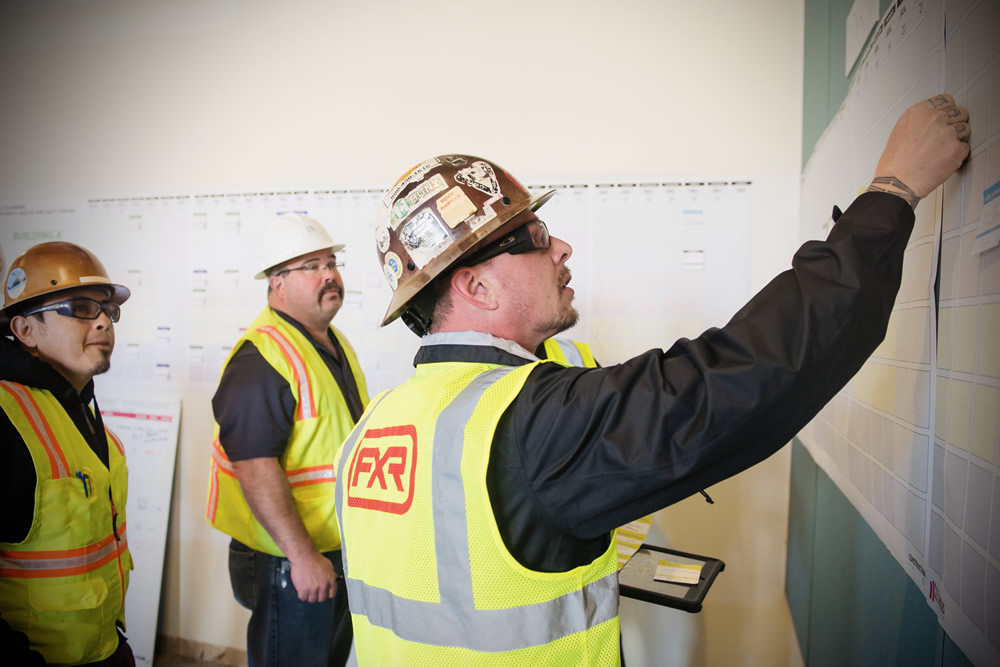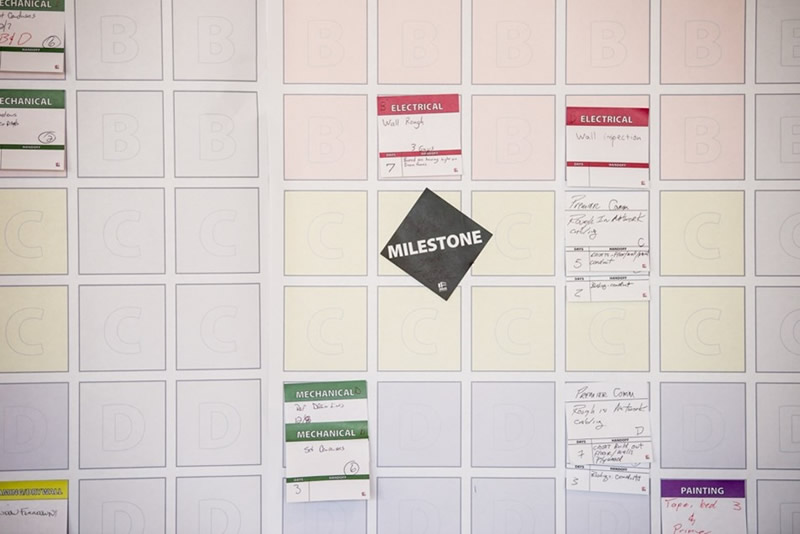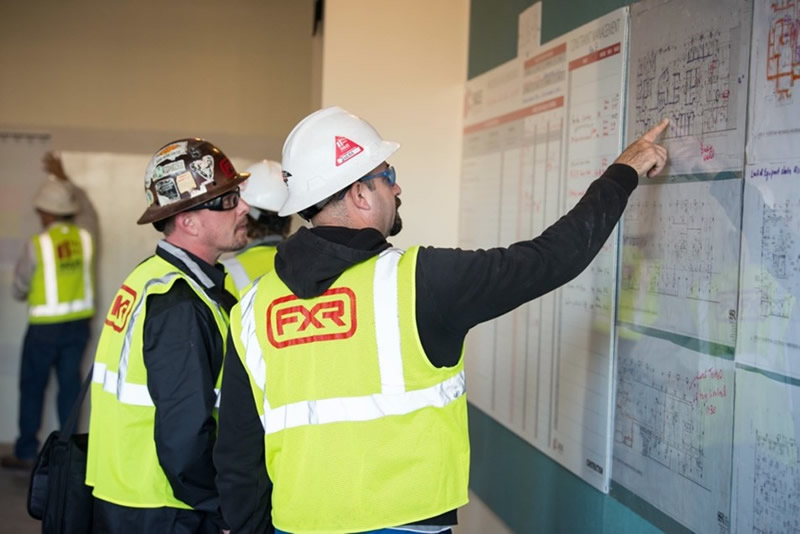If you’re new to the Last Planner System™ (LPS) and pull planning, I’m glad you found this post! When Last Planner System Pull Planning is implemented correctly, your projects will reap multiple benefits: better coordination, trade partner buy-in, and a schedule that is more reliable. In addition, the flow of work on your project will improve because all the trade partner foremen (aka “the last planners”, or the people who make the assignments to direct craftsman work) will have been empowered to continuously collaborate about work sequencing and the handoffs required for work to be released. On our projects, these conversations begin at a milestone pull planning session and continue across the project’s duration through weekly work plan conversations via a daily huddle.
I’ve led or been part of countless pull plans over the years, and through these I’ve learned a lot about what makes the pull plan a success or a failure. Here are seven helpful tips specific to last planners to ensure that they are well prepared for a pull plan session and positioned to gain the most value. If you are not a last planner but instead are leading a pull plan, you can share these tips in advance with your trade partners.
7 Steps for Successful Last Planner System Pull Planning
- Open your mind – Your success in this process requires a willingness to move away from the status quo and explore a method of planning that may be foreign to you. If you’re only used to project superintendents telling you how much time you have to plan your work, pull planning can be challenging because you need to put in the work of thinking through each of the activities, durations, and handoffs. Remember, you will be held accountable for the durations you’ve given, so make sure you feel confident you can deliver what you promise.
- Know what milestone is being pulled – If a general contractor invites you to a pull plan session be sure you understand what milestone is being pulled so you can be prepared to discuss your activities and durations as they are specifically related to that milestone. It would be good practice to look at the manpower takeoffs/estimate that your estimating department budgeted the project with as a reference when you build your activity durations. I’ve noticed that some trades will build in durations that they didn’t even have the manpower budgeted for in the first place.
- Understanding the phasing of planned work– If you are invited to a pull plan session and are not given any guidance on phasing or direction of flow, ask your general contractor beforehand. For example, if you are pulling foundation poured, is there a strategy on what direction to start in or how many areas the foundation is broken down to? If you are finishing out a space, what are the areas or zones, and what goes first: ductwork or framed walls? Are you starting in Area A and going clockwise or counterclockwise? Push on your GC to give guidance on this prior to the meeting. Phasing and flow can change during the pull plan meeting from what was initially articulated and that’s okay, that’s the benefit of having all the experts in the room for the pull plan session. It’s just important to have thought through these things prior to the session to utilize the time effectively.
- Be clear and complete on details – From a general contractor’s perspective, deciphering cards that have incomplete information, poor handwriting, or lack of detail can be extremely frustrating. Be sure that enough detail is given so that everyone understands the activity being described and the predecessors/handoffs required for the work to start. Example: “Prime walls in Area A” instead of “Paint.”
- Know what needs to happen in order for your work to begin – On our pull plan cards, we ask our trade partners for the activity, duration, and handoff. The hand-off (or predecessor) portion of the card is the last planner’s opportunity to share exactly what they need to have completed for their work to start. For example, if a mechanical trade partner is installing ductwork in Area A, their activity would say “Install ductwork in Area A,” and the hand-off may be “Shop drawings reviewed, ductwork fabricated, priority walls in place.” By showing these hand-offs on the pull plan cards, the entire team of last planners will be required to think through what must happen to complete those items so ductwork can begin, which leads to a better-defined schedule.
- Don’t hide float/contingencies in your durations – This is probably the hardest thing for last planners. If you have been around the block in the construction business, the one thing you can count on is that things can go off track. Weather delays, design delays, material delays—you name it, there is a risk factor. However, it is vital that the team make reliable commitments during the pull plan session. If activity durations have buffers prebuilt into them for unforeseen conditions, the schedule will end up bloated—and if things DO go as planned, the trade partner whose work comes next will not be ready, because the handoff occurred too soon.
- Don’t be shy – Pull planning takes courage. You may be in a position where your expertise is needed to make sure the schedule doesn’t go off track, so get comfortable with having these conversations with the general contractor or other trade partners. Stand up for yourself, be bold, and hold your ground when you need to, but always strive to be collaborative and open-minded when challenged. This is your opportunity to inform the flow of your work, and you don’t want to miss it by being passive, unengaged, or combative.
Share This Blog!
If you are a general contractor superintendent, please forward this to your trades before your next pull planning session. If you feel something is missing or would like to add to the conversation, please leave a comment below!
Be sure to follow The Lean Builder on LinkedIn!











